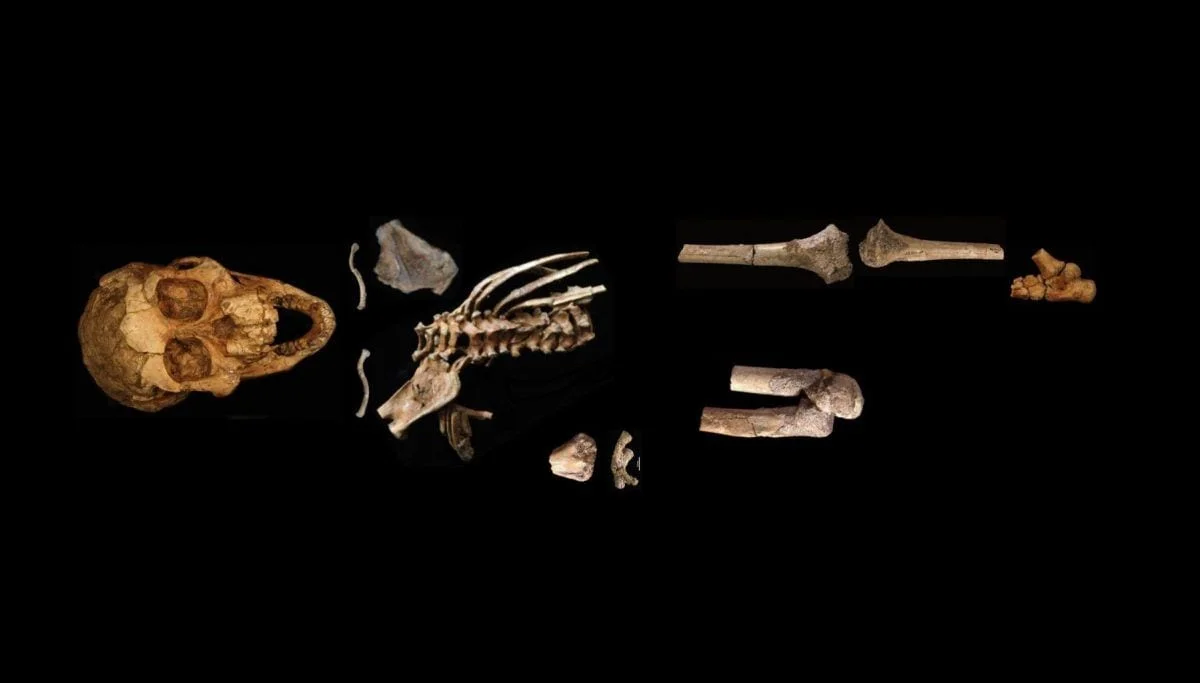A rare juvenile foot fossil of our early hominin ancestor, Australopithecus afarensis, exhibits several ape-like foot characteristics that could have aided in foot grasping for climbing trees, a new study shows.
This finding challenges the long-held assumption that A. afarensis was exclusively bipedal (using only two legs for walking) and only occasionally climbed into trees. Juvenile hominin fossils provide unique insights into how traits (like foot grasping) become less apparent as the individual grows into adulthood.
However, juvenile specimens of most human hominin ancestors are scarce, and thus, it has been difficult to trace how important traits are selected in animals, over time. In 2002, archaeologists discovered a well-preserved, partial skeleton of an infant A. afarensis, thought to be around 3-years-old at the time of death.
Although this 3.32-million-year-old fossil from Dikika, Ethiopia, was announced in a previous 2006 study, many of the skeleton’s elements, including the partial foot known as DIK-1-1f, were encased in sediment and therefore had to be carefully uncovered.
Many of these structures have now been exposed after additional preparatory work through 2013, and here, Jeremy M. DeSilva and colleagues report on this juvenile hominin’s foot features.
They discovered that this infant possessed many of the structures necessary to walk on two legs that have been found in adult specimens, but it also retained a convexity of the medial cuneiform – a bone important for joint movement, such as that involved in climbing – into adulthood, they say.
This evidence of increased mobility of the toe is an ape-like pattern that DeSilva et al. say is suggestive of a selective advantage of this trait and which offers new insights into the evolution of bipedality.
Header Image – The Dikika foot is one part of a partial skeleton of a 3.32 million-year-old skeleton of an Australopithecus afarensis child. – Credit: Zeray Alemseged





